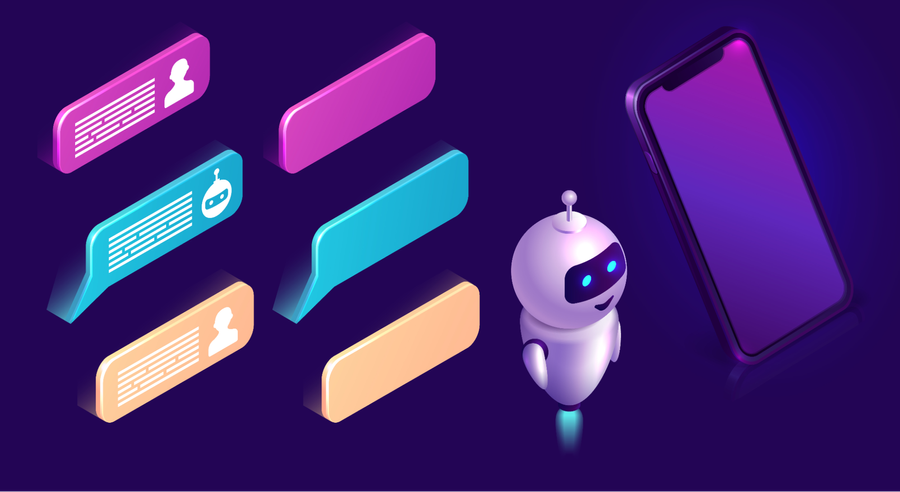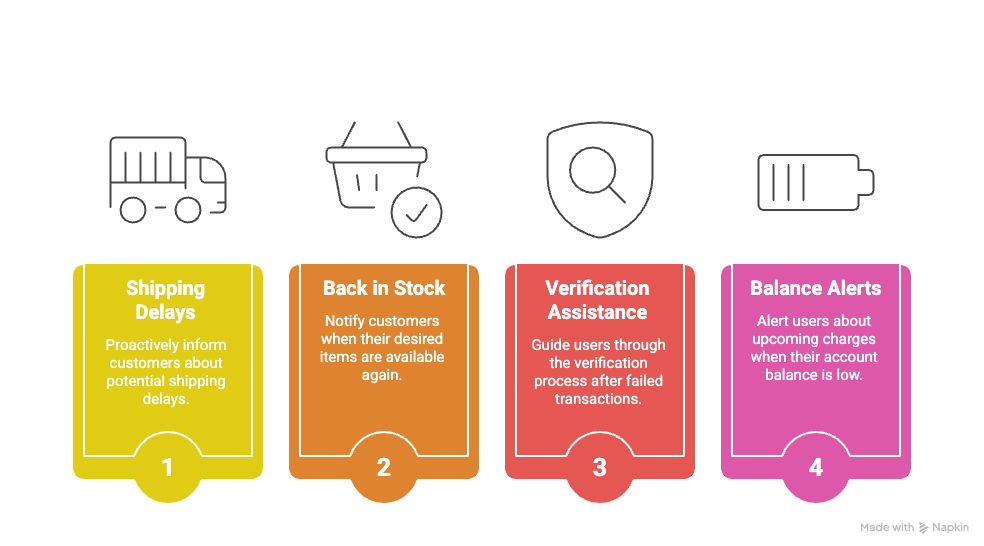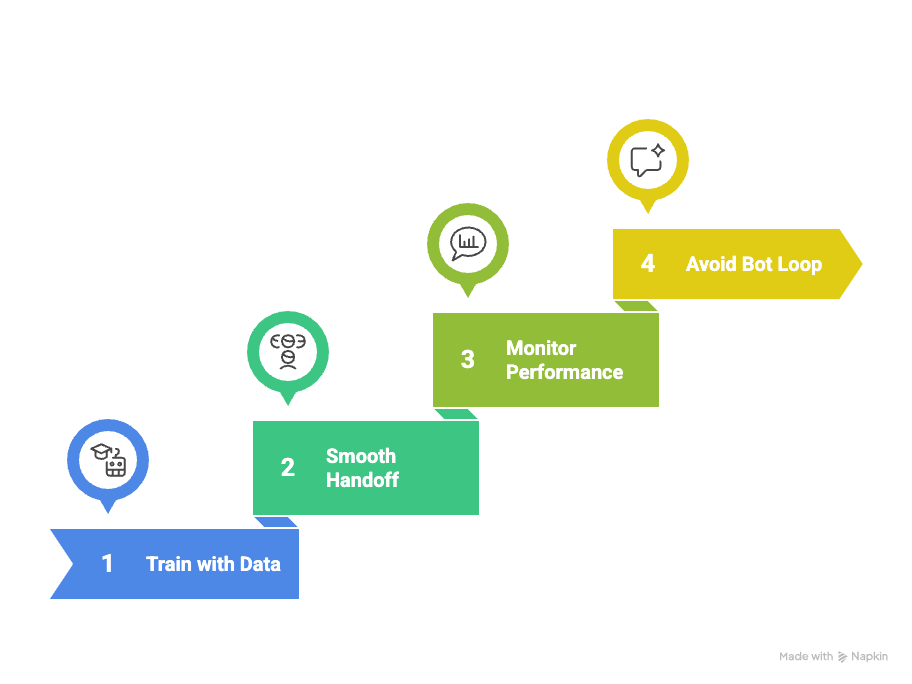How can chatbots improve customer service? Guide for 2025
Vaishali Jayaprakash
Sep 12, 2025

Chatbots have become a regular part of online experiences, with most internet consumers using them. Their rapid adoption demonstrates how they make customer service better through instant, personalized support that customers can access anytime with a simple click.
The technology has still got some work to be done despite its success. Chatbots provide reliable support 24/7, but few customers say they can't handle complex inquiries effectively.
These AI assistants revolutionize and enhance customer relationships. The technology helps companies cut response times and reduce operational costs without adding to their team's workload.
This piece will show you how chatbots can enhance your customer service operations. You'll learn their main advantages and implementation strategies for 2025.
What can chatbots do in customer service?
Modern chatbots not just answer questions, they do much more. AI-powered customer service chatbots now resolve over 80% of customer issues on their own. This lets human agents focus on more complex tasks that need their attention.
Answer common questions instantly
Chatbots are great at handling frequently asked questions. They give quick answers instead of making customers wait for human help. These bots handle most of all customer service questions in various industries. They can quickly access knowledge bases and give consistent answers about business hours, policies, and simple troubleshooting.
These digital assistants work 24/7 and help customers whatever their time zone or holiday schedule. Companies see fewer support tickets, lower costs, and faster solutions. Customers get the quick information they need right away.
Help customers find products
Online shoppers often need help finding their way through large product catalogs. Chatbots help by searching inventory based on what customers tell them they want.
They also show real-time stock updates so shoppers know if items are available before buying. This helps set the right expectations and stops frustration when products aren't in stock.
E-commerce chatbots can help pick gifts by asking about the recipient's gender, the occasion, and what type of product the customer wants. This feels like talking to a store assistant, which makes online shopping feel more personal and natural.
Track orders and shipping
Order tracking is one of the most useful chatbot features, as shoppers want real-time updates. These bots link to shipping systems and tell customers about order status, delivery times, and where their package is right now.
Companies can cut down on "Where's My Order?" (WISMO) questions that usually flood support teams. The tracking systems work across web, mobile, live chat, SMS, and email. This creates a smooth experience no matter how customers like to communicate.
Some advanced chatbots even let customers change their orders, enable returns, or report delivery problems right in the chat.
Provide personalized recommendations
AI chatbots make shopping more personal by pulling customer data during chats. They look at what you've bought before, what you browse, and your past conversations to suggest products you might like.
This changes how people browse by showing them things they're likely to want. The numbers prove it works—websites with personalized recommendations see up to 4.5 times higher conversion rates than those without.
Connect users to live agents when needed
While chatbots handle most questions well, they know when they're in over their head. Good chatbots naturally connect customers to human agents for complex issues.
This creates a mix of automated and human support that works well together. The best systems share the whole conversation with the human agent, including customer details and chat history. Customers don't have to repeat themselves when they switch to a human agent.
This combined approach helps businesses use their resources better. Simple questions get automated answers, while human agents focus on tricky situations. Companies can use AI to handle basic questions, which gives their staff more time to work on complex cases that need their special knowledge.
5 Top benefits of using AI chatbots
Companies that use AI chatbots see better results in many areas of their business. These AI assistants do more than just answer questions - they bring real benefits that streamline operations and enhance customer support.
1. 24/7 availability and fast response
AI chatbots never stop working, unlike human agents who need breaks and time off. Your customers get help any time they need it - weekends, holidays, or late at night.
Quick responses matter to customers. AI chatbots answer questions right away, which makes support faster and more efficient. This quick attention helps meet customer needs for fast solutions.
2. Consistent and accurate answers
AI chatbots excel at giving standard answers from one central source. Human teams might vary in their knowledge, but chatbots pull the same accurate information every time. This creates a uniform experience for all customers.
Your brand message stays consistent and accurate in every interaction. Customers get reliable, high-quality information no matter when they reach out or how many questions they ask. This builds trust over time.
3. Lower support costs
AI chatbots make a real difference to the bottom line. IBM reports that businesses can cut customer service costs by up to 30% with AI virtual agents.
The numbers tell the story:
- Vodafone cut its cost-per-chat by 70% with AI chatbots
- Alibaba saves $150 million each year by using AI for over 2 million daily customer chats
4. Improved customer satisfaction
Quick solutions lead to happier customers. Customer engagement grows with AI chatbot implementation. Quick, tailored help creates positive experiences that keep customers coming back.
5. Scalable support during peak times
AI chatbots can handle many conversations at once. While human agents focus on one customer at a time, AI manages multiple chats without losing quality.
This flexibility helps during busy periods. Companies maintain service quality during unexpected rushes without hiring extra staff.
Enterprise chatbots grow with your business without adding support costs or staff. This breaks the old model where support teams had to grow as fast as the customer base.
4 Real-world examples of chatbot use
Chatbots are solving unique challenges and delivering results in businesses of all types. Let's look at how these chatbots make customer service better in real-life business situations.
1. E-commerce bots for product discovery
Retailers use chatbots to guide shoppers through their catalogs and help them find what they need. Companies use chatbots that suggest products based on concerns as well. These virtual assistants work like personal shopping guides. They ask specific questions about customer priorities, make suggestions, and help narrow down choices.
Smart chatbots jump in to help customers who seem stuck on a page. This helps keep shoppers from leaving and boosts sales naturally. Studies show these bots can boost online orders by up to 300% and create 30% more leads.
2. FAQ bots for self-service
Self-service chatbots handle most of the basic questions, so customers find answers without waiting for human help. These bots link to knowledge bases and give quick answers about shipping, product details, and how to fix common problems.
FAQ chatbots give immediate answers to common questions. They act as the first point of contact on social media, messaging apps, and email.
3. SMS bots for mobile support
Text message chatbots reach customers through their favorite way to communicate. SMS works better than email with a 98% open rate compared to email's 20%.
These bots help track orders and remind people about appointments through simple texts. SMS needs no apps or accounts, so it's available to anyone with a phone. This makes it valuable where people don't use apps much but text regularly.
4. Healthcare bots for appointment scheduling
Healthcare providers now use chatbots to make appointment management easier. Patients can book, change, or cancel appointments without picking up the phone.
These bots confirm bookings right away and remind both patients and doctors about upcoming visits, which cuts down on missed appointments. Some chatbots even check symptoms and help patients find the right doctor.
Modern healthcare bots work with Electronic Health Record systems to keep data accurate and prevent booking mix-ups. Many speak multiple languages, making healthcare available to people from different backgrounds.
How can chatbots improve customer service?
AI chatbots revolutionize support experiences with advanced features that create deeper customer connections. Modern AI assistants do more than answer questions - they build meaningful interactions that foster loyalty and trust.
Personalized interactions using data
AI chatbots boost personalization by connecting to backend systems that pull relevant customer data during conversations. This setup lets them access purchase history, priorities, and account details to customize responses for each user. Your first impression counts, which is why the best chatbots welcome customers by name and recognize their status whenever possible. These personal touches show customers you understand what they need, which turns basic questions into opportunities to build loyalty.
Companies make use of information from support interactions and documented resources to create AI tools that tap into their unique knowledge base. These tools deliver tailored service and proactive support.
Multilingual support for global users
Today's customer service chatbots understand and respond in multiple languages through built-in translation tools or natural language processing. Companies can now support customers worldwide without large international teams. Multilingual service isn't optional anymore—it's crucial for companies growing globally, since over 21% of U.S. households speak a language other than English at home.
Multilingual chatbots bring several benefits, especially higher customer satisfaction when users get help in their native language. These AI assistants spot the user's preferred language automatically and adjust conversations to create a more comfortable support experience.
Proactive help based on user behavior
Modern chatbots don't just wait for customers to reach out - they start conversations based on user behavior. A chatbot window might pop up with helpful suggestions if someone stays on a checkout page for more than 60 seconds.
These proactive AI agents can do even more:

Omnichannel support across platforms
The combination of connected data and AI lets users get help on any customer service channel while receiving a smooth, personalized experience. Omnichannel chatbots provide consistent support through web, mobile, messaging apps, and social media platforms. Customers can get help wherever they are.
The biggest advantage is continuous support across all touchpoints. Customers might start talking on your website and switch to your mobile app later, while the chatbot continues the conversation exactly where they stopped. This smooth experience helps improve customer retention. Businesses that use omnichannel effectively retain their customers, compared to those with weak omnichannel strategies.
4 Best practices for chatbot implementation in 2025
Smart planning and execution are essential to maximize chatbot value in customer service. These practices will help you get the most from your chatbot implementation.

1. Train bots with real customer data
Your chatbot's success depends on learning from actual customer conversations. The best approach starts with analyzing support chat logs, surveys, and common questions to build realistic training scenarios. Your Sales, Marketing, and Customer Service teams should help identify customer pain points. The system needs popular keywords to handle rephrasing challenges effectively. Companies without technical expertise can use Chatbase's no-code solution to train chatbots with their business data.
2. Ensure smooth handoff to human agents
AI systems need human backup, no matter how advanced they are. Your chatbot should know its limits and connect users to human help at the right time. A smooth transition acknowledges the handoff, sets clear expectations, and shares the whole conversation history to avoid asking customers the same questions. Microsoft suggests two models that work: "bot as an agent" disconnects after escalation, while "bot as a proxy" stays involved.
3. Monitor and improve chatbot performance
Regular evaluation stops "bot rot" from setting in. Success metrics should track user satisfaction, chatbot accuracy, goal completion rate, and how often humans take over. Users can provide direct feedback through post-chat surveys that ask "Was I able to solve your problem?". Your team should study conversation logs to spot patterns where misunderstandings or dead ends occur.
4. Avoid the 'bot loop' with smart fallback options
The White House tackled customer service "doom loops" that trap users in endless chatbot cycles. Smart bots apologize when they can't process requests and connect users with human representatives. Your system needs confidence thresholds for unexpected inputs. Every conversation should end with helpful alternatives - users can check FAQ pages or send emails.
Key takeaways on how can chatbots improve customer service
Chatbots have revolutionized customer service by making it more affordable and efficient while substantially improving the user experience. These AI assistants never tire as they answer common questions, locate products, track orders, and offer tailored recommendations without human help. They deliver these services instantly, accurately, and consistently - whatever the time or day.
Your business can reap huge benefits from chatbot implementation. You'll save up to 30% in costs as chatbots handle routine questions that used to take up your agents' time. Users love getting immediate responses instead of waiting in queues. On top of that, chatbots easily scale up during peak times and you retain service quality when customer numbers spike.
Success stories from e-commerce, healthcare, and financial services show how versatile and effective chatbots can be. Companies like Vodafone and Alibaba have saved millions while speeding up resolution times and boosting customer participation.
Chatbots will become even smarter with better personalization, proactive assistance, and continuous connection across channels. But their success depends on proper setup. You'll need to train them with real customer data, make human handoffs smooth, keep track of performance, and stop frustrating bot loops from happening.
Chatbots do more than just automate - they're a practical way to deliver exceptional customer service at scale. While they can't replace human agents for complex problems, they excel at routine tasks. This frees your team to focus where human empathy and expertise really count. Such a balanced approach creates the perfect customer service ecosystem that works for today and tomorrow.
Quick summary: How chatbots improve customer service (2025 guide)
Chatbots have become essential in customer service by delivering instant, 24/7 support that reduces wait times, cuts costs, and improves customer satisfaction. They can answer FAQs, recommend products, track orders, and provide personalized suggestions—freeing human agents to focus on complex issues.
AI-powered chatbots bring major benefits:
- Faster responses and consistent answers
- Lower operational costs
- Scalable support during peak times
- Higher satisfaction through personalization and multilingual capabilities
Industries from e-commerce to healthcare use chatbots for order tracking, self-service, SMS support, and even appointment scheduling. Success depends on training bots with real customer data, ensuring smooth human handoffs, monitoring performance, and avoiding frustrating loops.
In short: chatbots don’t replace humans—they augment them. They handle routine queries efficiently, allowing agents to focus on empathy-driven tasks that build loyalty and trust.
Frequently Asked Questions
Chatbots can access customer data from backend systems, including purchase history and preferences, to tailor responses and recommendations for each user. This personalization creates more meaningful interactions and shows customers that their individual needs are understood, contributing to customer service improvement.
A chatbot in customer service is basically a virtual assistant instantly answering common questions like “where’s my order?” or “how to reset password?” Customers can get help anytime without waiting for an agent, as chatbots work 24/7.
Chatbots provide instant responses to customer inquiries, dramatically reducing wait times. For example, some businesses have seen average query resolution times drop from 11 minutes to under 2 minutes after implementing AI assistants.
Yes, many modern chatbots offer multilingual support using built-in translation tools or natural language processing. This allows businesses to serve global customers in their preferred languages without maintaining large international teams.
There are various benefits of chatbots such as , 24/7 support, instant answers, reduction of support costs, handling multiple chats without any delay, freeing up human agents for more tougher problems.
